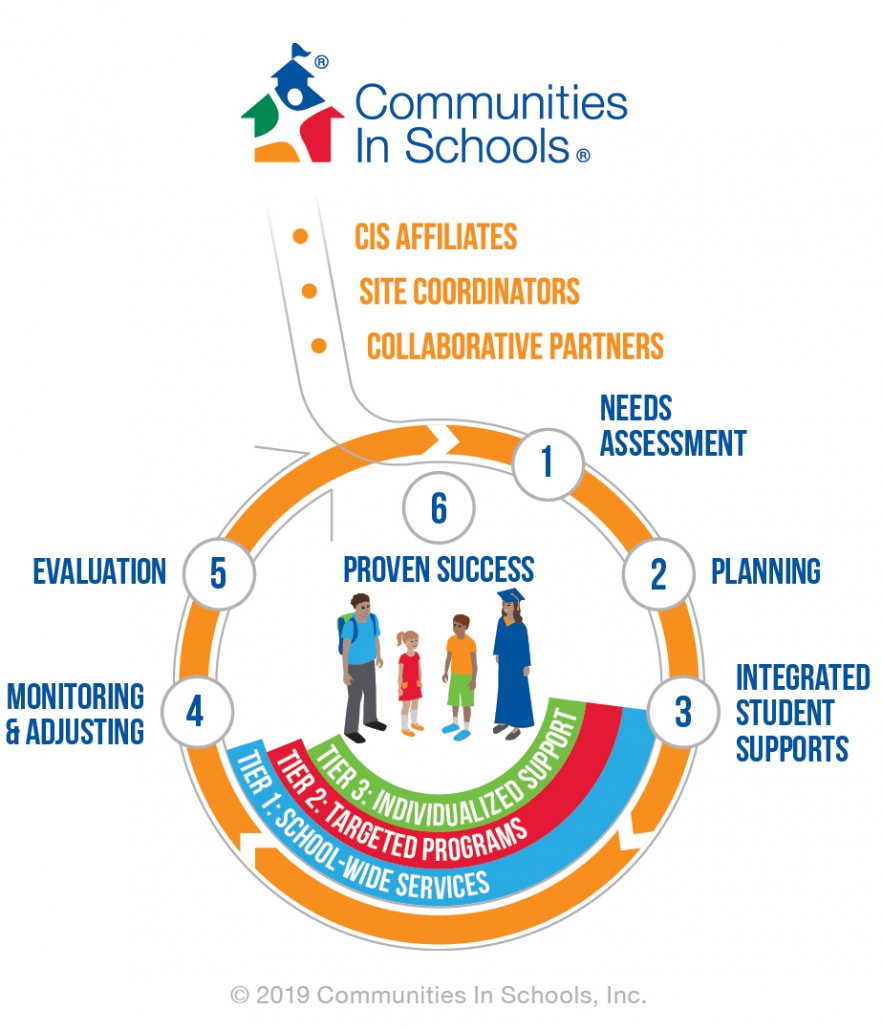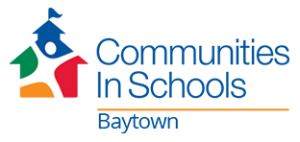Our evidence-based approach is the basis for our success. Many children face challenges both inside and outside the classroom. Through a school-based site coordinator, CIS of Baytown strategically aligns and delivers needed resources so that students can focus on learning and their future.
Our Core Beliefs
We believe every child needs and deserves:
A personal one-on-one relationship with a caring adult
A safe place to learn and grow
A healthy start and a healthy future
A marketable skill to use upon graduation
A chance to give back to peers and the community
Our Model
Many students and their families have a hard time accessing and navigating the maze of public and private services. There may be ample resources in a community, but rarely is there someone on the ground who is able to connect these resources with the schools and students that need them most. Through a school-based coordinator, we bring community resources into schools to empower success for all students by removing barriers for students at risk of dropping out, keeping kids in schools and on the path to graduation and leveraging evidence, relationships and local resources to drive results.
CIS AFFILIATES hire and train site coordinators, brings the CIS model to schools in need and mobilizes partners to provide resources.
SITE COORDINATORS are trained professionals who works with school administrators to assess needs, develop a plan and build a team to provide supports to schools and students.
COLLABORATIVE PARTNERS are schools, businesses and community agencies all working together with site coordinators to deliver supports to students and families.
1. NEEDS ASSESSMENT is used to analyze multiple sources of data to identify the key needs of the school and individual students. What sets Communities In Schools apart is our holistic approach to addressing both the academic and nonacademic needs of students. Working with school leadership and staff, CIS site coordinators — who are based inside schools — prioritize the needs of the school, determine which supports need to be increased or improved and identify supports that the schools need but don’t currently have. In addition to the school needs assessment, site coordinators also identify students at risk of dropping out, assess what they need and then find the right supports to ensure they stay on track to graduate.
2. PLANNING takes place as Site Coordinators lead their school support team to develop a plan to prioritize supports that address academic and non-academic needs. Once the needs assessment is complete, the site coordinator meets with their school support team to put together a plan to address these needs–through school-wide, targeted group and individualized supports. They then collaborate with local providers to put these plans into action. They attach measurable goals to the plans and track progress against defined metrics to ensure they provide the best possible supports, producing positive results for schools and students.
3. INTEGRATED STUDENT SUPPORTS happen when Site Coordinator work with volunteers, partners and the local community to provide students with the supports they need to succeed both inside and outside the classroom. We provide these supports in three different tiers. By differentiating our supports, we are able to serve most students in a school and also focus attention on targeted students that have significant needs.
a. Tier 1: School-wide services
b. Tier 2: Targeted programs
c: Tier 3: Individualized support
Some examples of Integrated Student Supports include academic assistance, behavioral interventions, community and service learning, family engagement, mental health, basic needs, college & career prep, enrichment, life skills and physical health.
4. MONITORING & ADJUSTING Site Coordinators continuously monitor students and school progress and adjusts supports to optimize results. Once the Site Coordinator and their school support team have identified needs and put a plan in place to address those needs, they continue to meet with students, families, teachers and providers to make sure the supports are working. By setting goals with individual students and the school as a whole, they are able to monitor progress and adjust support accordingly. If they find out the plan isn’t working as well as it could, they bring the right people back to the drawing board to adjust and create a plan that does.
5. EVALUATION Continuous assessment of partners and student supports by the CIS affiliate to demonstrate results and improve practice. Just as we monitor and adjust supports we are providing on the ground, CIS Baytown also conducts evaluations of the entire CIS model – both at the school-wide and individual student level. Additionally, the CIS National Office engages in 3rd party evaluations of the network to ensure fidelity to the CIS model and positive impacts for schools and students. These evaluations, some of the most rigorous conducted in the field of Integrated Student Supports, show that CIS is proven to increase graduation rates, decrease dropout rates and improve student attendance, leading to brighter futures for students in our community.
6. DEMONSTRATED SUCCESS We increase graduation, reduce dropout, and improve attendance for schools in need.
Of CISB case-managed students in the 2023-2024 school year:
- 99.75% of our students were promoted.
- 97.67% of our students graduated.
- 100% of our students remained in school.
- 94% of our students improved academically.
- 94.03% of our students improved behavior.
- 78.19% of our students increased their attendance.



